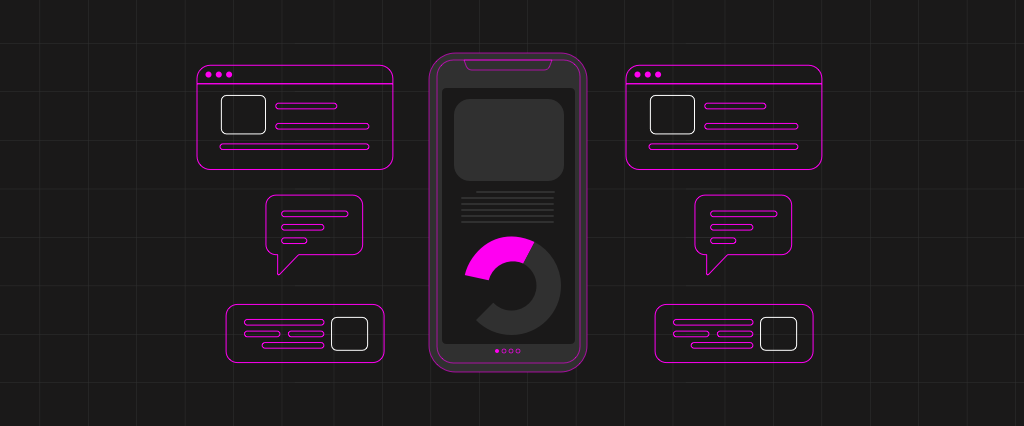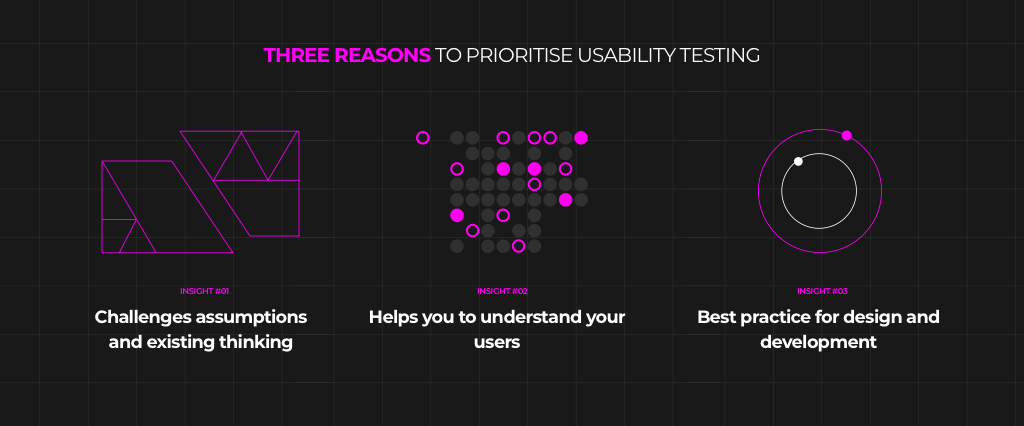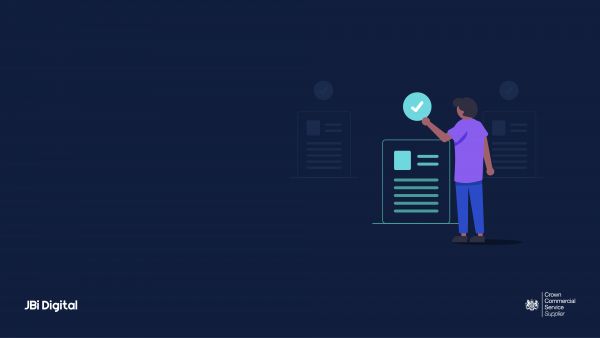Usability testing is a valuable part of digital design – but it is easy to neglect it due to timings or costs. Our UX specialist, Marika Fitzgerald, explains why you should test, test, test – for your users’ sake.

Test, test, test again. As a marketer or product manager, that is the priority when you build digital products and services – so your app or website can serve the needs of the people who use it.
That is why usability testing is so important. Every time you test your product with users, it is a moment before the moment of truth: a chance to understand how they experience your service, so you can get things right before it goes live, reducing risk.
All too often, however, budget and timelines can get in the way.
For example, if you are concerned about project budget, you might wonder if you really need usability testing – or whether you might remove it from the tender to create some slack.
Or if your hosting contract is ending soon and you have to go live by a certain date, you might be tempted to hurry toward launch – without testing your product first.
The problem, though, is that when you do this, you miss out on a chance to hear from your users.
And whether you are working in the public sector, creating an e-commerce service, or funnelling a B2B client toward a CTA (Call to Action), your users are key to your project’s success.

Three Reasons to Prioritise Usability Testing
As a design team, we want your product to serve your users’ needs. So we suggest prioritising UX design – and making usability testing part of your next product build. Here is why.
- Usability testing challenges assumptions
We will always aim to discover as much as we can about your users from you in order to build a successful, user-focused digital product. But at the same time, we make decisions based on our own knowledge, and make professional assumptions – perhaps without realising it – about what your users want. Some of those will turn out to be wrong.For example, does a non-technical audience understand that an icon with three horizontal lines means “menu” in a mobile app? If not, can they work out how to navigate to where they need to go?
Or will a target user recognise that a search box is not for “free text” – and be surprised if they cannot find what they want?
Ultimately, will users be able to complete what they set out to do when they come to your site or app – or will they give up?
Usability testing makes the former more likely and the latter less, which is invaluable in helping to ensure that your platform is successful.
- You can get to know your users better
For usability testing to work well, your UX team should recruit volunteers who match your audience types. These might include people from different backgrounds or demographics, with different levels of knowledge about your brand.When you meet these users at the test lab, you get the chance to observe them as they interact with digital products and perform tasks, using the devices they are most comfortable with. That way, you can start to get to know what obstacles they may face in performing tasks.This is also why it helps that, as the UK opens up after Covid-19 lockdowns, there is more chance to test users in the lab, as opposed to remotely.
When people come to a testing lab, we can offer them a coffee, chat with them and help them to relax. We can help gain insights that do not come so easily when they are sitting behind their screen at home – for example, their own suggestions for how you might improve your product design.
What you learn when customers open up like this is useful not only for design, but also for the wider service you provide. It helps you make a connection with your users which you might not otherwise be able to make, which is very useful in achieving your wider organisational goals.
- Usability testing is best practice
You probably already know this, but it is worth stating: if you omit usability testing, you are ignoring best design and development practice – and that is never a good idea. Government design principles, for example, make it clear that you should not only identify users’ needs before you start work, but also iterate – and as you do, “test with actual users”.Elsewhere, when reminding us of the importance of accessible design, the guidelines also say that “the people who most need our services are often the people who find them hardest to use”.
This is also a strong argument for usability testing, because if people find services difficult to use, testing gives you a chance to hear their feedback – and fix it.
So, usability testing is important on its own merits. But you may still be wondering about the budget you would need to devote to it.
In practice, the budget for usability testing includes three main elements: the lab, the UX team’s time, and the cost of recruiting volunteers.
Compared to the cost of the whole project, that may be a relatively small proportion.
Of course, you would also need to save a part of your budget to make necessary changes, but that is the direct cost of making your service better. And when you do this, usability testing helps you not only to follow best practice – but to meet the needs of the users you serve.
Get in touch
At JBi Digital, we can help you to iterate through a project – and create a successful digital service, designed around your users. To do this, we work in partnership with you.
If you have a project that you would like to discuss with us, please don’t hesitate to get in touch by calling 02070432510 or emailing hello@jbidigital.co.uk.




